A problem some sportsmen found in the early years of hammer breech-loaders was the issue of strikers sticking in the soft caps of some cartridges.
When they did so, opening the gun could be difficult, as the striker was acting as a bolt, bridging the breech just where it needed to open.
The oblique angle of the strikers exacerbated the problem, as the barrels have to move upwards to open and the stuck strikers are angled down, making opening difficult.
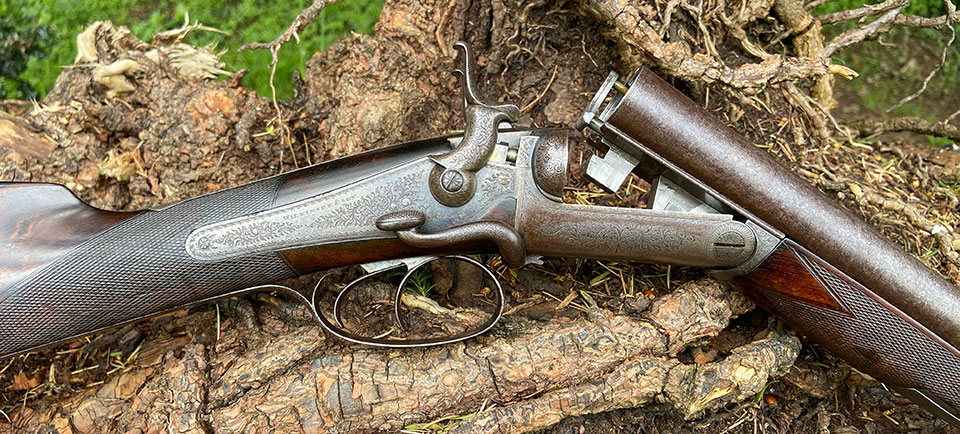
Several inventors tackled this with designs that manually retracted the strikers when the hammers were drawn to half cock.
One of the most elegant of these is Charles Harvey’s patent 1793 of 7th July 1866. Harvey gave his address as 27 Pall Mall, which was the trading address of Wilkinson & Son. Harvey was very likely an employee of Wilkinson or, like John Emme, Thomas Bissell and E.C. Hodges, some kind of ‘gunmaker to the trade’ who collaborated with an established form for their mutual benefit.

Harvey’s design makes fro a neat hammer gun and it works faultlessly. As ammunition got better and the problem of sticking strikers lessened, these complications became unnecessary. A year after the Harvey patent, Stanton introduced the rebounding lock, which quickly gained widespread popularity.
Harvey gave his address as 27 Pall Mall, which was the trading address of Wilkinson & Son
The gun pictured here is a Wilkinson 16-bore made to Harvey’s patent and sold a decade later, in 1877, to a Capt. Lloyd of the 21st Hussars. The rib is engraved ‘Wilkinson & Son. Gunmakers to Her Majesty. Pall Mall. London’.
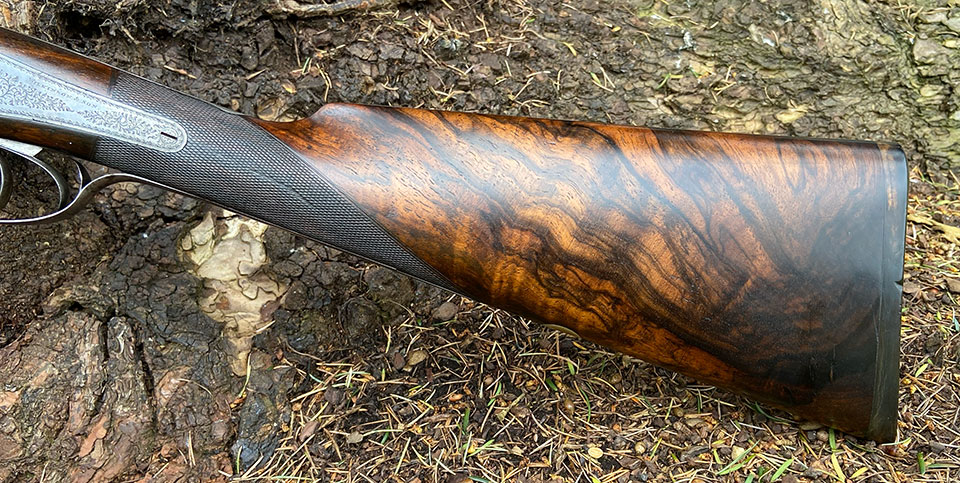
The 21st Hussars, formed in India in 1858 following the Indian Mutiny, as the 3rd Bengal European Light Cavalry, was adopted by the British Army in 1862, in turn being designated the 21st Lancers in 1897 and seeing action under Kitchener in 1898 at the Battle of Omdurman, the last cavalry charge of the British Army. A young Lt. Winston Churchill rode with them.
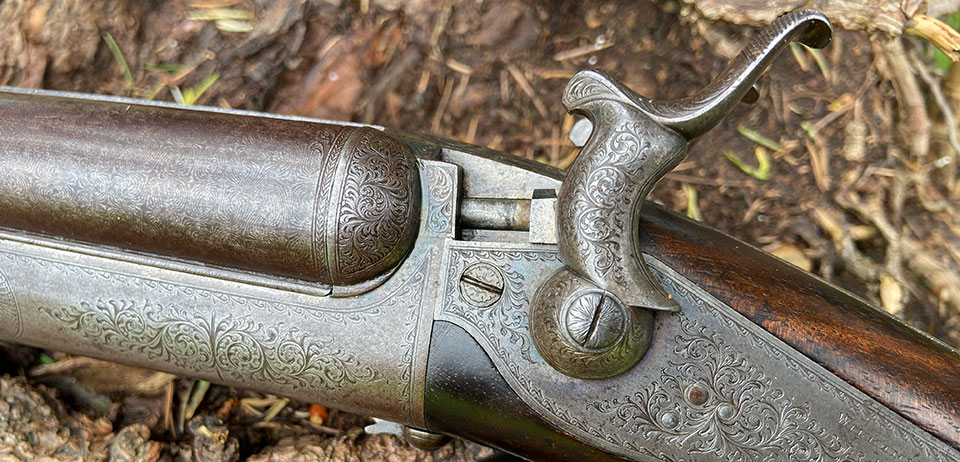
The gun, serial No.6635, is in unrestored condition. Judging from the original chequer, which is not well worn, though it dies have some impact damage in places, it was not extensively used.
The lock plates fit snugly to the wood, which is very well figured, and the forend iron and lever retain their original finish.
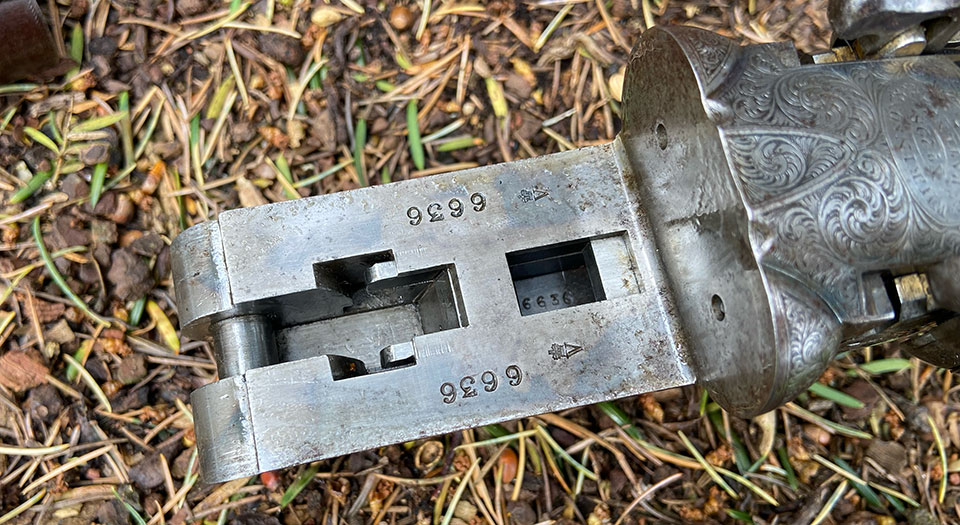
Engraving on the grip catch fore-end lever states ‘Wilkinson’s Patent Lever Fore-End’ and the top of the action, ahead of the top strap reads ‘Wilkinson’s Patent No.298. 1877’.
The fore-end is actually the Harvey-patent grip catch of 1866, which acts like a Lefaucheux, using a forward facing lever to operate a screw-grip.
stamped ‘CL’, indicating that Charles Lancaster made them
This type became a favourite of John Rigby and can still be found on their new ‘Shikari’ double rifle, launched in 2024.

The side lever operates a sliding bolt, which engages with a conventional Purdey type bite in the rear lump and a forward engaging prong, which slides over two lateral projections from the front lump. It appears to conform to the patent of John Emme & James Woodward (No.267 of 1872).
With the exception of one guard screw, the screws and ins are all in good order. The barrels retain their original brown but the bores have been lapped to remove pitting, much of which remains. They are stamped ‘CL’, indicating that Charles Lancaster made them and proof marks are black powder only.
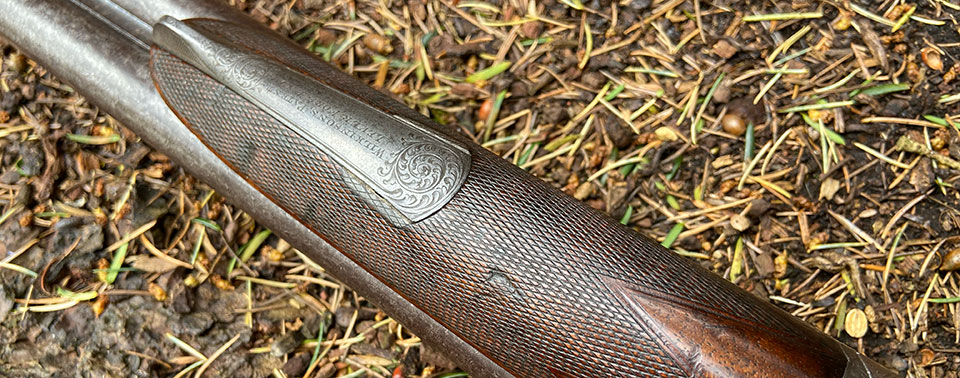
A visual inspection suggests a gun that was not hard used but put away and not cared for over several decades.This is preferable to incompetent repair or refurbishment but it cannot be described as pristine. It is, however mechanically very sound and un-worn. Weight is 6lbs 5oz with 30” barrels and 14 1/2” stock, finished with an original, chequered horn butt-plate.
Wilkinson no longer sells guns but the company, always renowned for its military swords, is now a manufacturer of razor blades. The oldest gun with a Wilkinson serial number is No.173, made in 1807. Records extant are patchy but they run up to 1906. Details can be found at https://www.armsresearch.co.uk/index.htm

Published by Vintage Guns Ltd on




